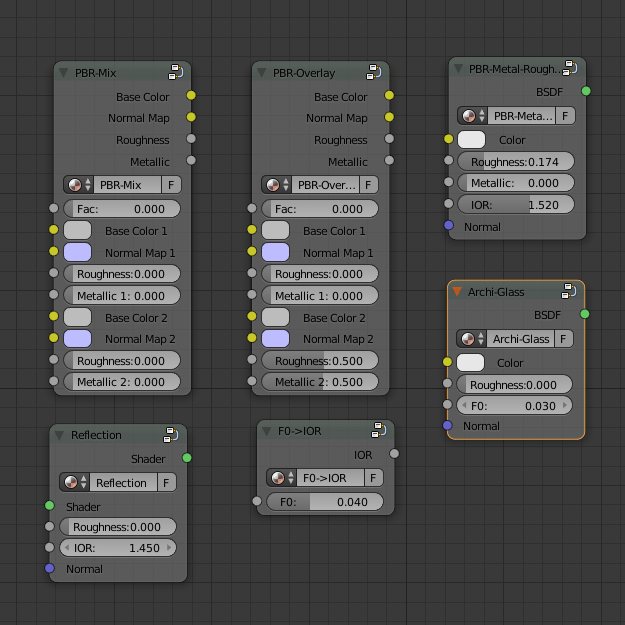Hi,
it has been few weeks since I started using Substance Designer and I picked the Metal Roughness workflow because it seems bit more intuitive for me. I made a few useful nodes to speedup the material setup in Cycles.
PBR-Metal-Roughness
I needed a fast and efficient way to import the basic four textures (base color, normal map, roughness, metallic) into cycles material node editor and that is why I made this PBR-Metal-Roughness node. It is mostly based on the tutorials by CynicatPro with slightly different fresnel node and with the extra roughness input. There are also a small optimisation in the shader so that it uses only basic diffuse shader for diffuse rays. The IOR value does not affect the metallic shader, only the dielectric. You can leave it at the default value, for most materials it is perfectly fine.
PBR-Mix
This node can be used for mixing two sets of PBR textures into one. It is useful if you want to use vertex color (or an image texture with different uv coordinates) to mix two materials.
PBR-Overlay
This one is really useful for adding detail maps into the materials. Just make sure you use a High Pass filter on your detail maps.
Archi-Glass
This is useful for glass in windows. It has better performance than the regular glass shader.
Reflection
This is the same as the reflection node in Cynicats tutorial.
F0->IOR
A simple convertor that converts the front reflection to IOR. For those who use reflection maps and those who don’t like setting IOR values 
Here is the blend:
PBR-Metal-Roughness.blend (761 KB)
Feel free to use it like you want (CC0).
